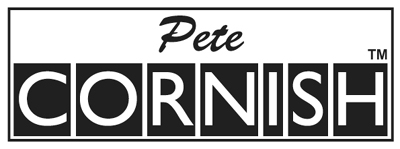
Unit 5, Silveroaks Farm, Hawkhurst Lane, Waldron, Heathfield, E.Sussex, UK, TN21 0RS
Tel (0)1435- 813393, International +44 1435 813393
VAT Reg. No. GB 241 7291 72

Unit 5, Silveroaks Farm, Hawkhurst
Lane,
Waldron, Heathfield, E.Sussex, UK, TN21 0RS
Tel (0)1435- 813393, International +44 1435 813393
VAT Reg. No. GB 241 7291 72

"Hey Pete, do you use True Bypass?"
Look out there's a lecture coming:
The "true bypass" function, which is promoted by some, can create dreadful problems with a system that uses many pedals. Take for instance a 15 ft guitar cable linked to ten pedals, each linked by a 2 ft cable, and then onto the amp by a 30 ft cable. If all pedals have "true bypass", and are off, then the total cable length hanging on the guitar output will be 63 ft. This will cause a huge loss of tone and signal level particularly if the guitar is a vintage type with low output and high impedance. The amp volume is then turned up and the treble control increased to compensate for the losses. The inherent background noise now increases by the amount of the gain and treble increase and is usually, in my experience, too bad for serious work. If one of the pedals is now switched on, then it's (hopefully) high input impedance (and usually low output impedance) will buffer all the output cables from the guitar and the signal level will rise due to the removal of some of the load on the pickups (i.e.: 17 ft instead of 63 ft of cable). The treble will rise and the tone and volume will not be as before. If that pedal was say a chorus or delay, devices which are usually unity gain, then your overall signal level and tone will vary each time an effect is added...not a very good idea.
Some pedals have an input impedance which is far from high in real terms; the input impedance of the vast majority of amps is 1 Megohm (one million ohms) and in my experience there are few effects pedals that have the same input impedance. A load on the guitar of less than 1 Megohm will reduce the volume and high frequency content of the pickup signal thus giving rise to complaints that "this pedal looses tone/volume" etc. Many effects I have tested have an input impedance of less than 100 Kilohms (ie: only one tenth of the amp input impedance) and cause serious signal losses in the effects chain.
My system, which I devised in the early 70's, is to feed the guitar into a fixed high impedance load, which is identical to the amp input, and then distribute the signal to the various effects and amps by low impedance buffered feeds. This gives a constant signal level and tonal characteristics, which do not change at all when effects are added. The proof that this works are in the recordings of our clients: Roxy Music; The Police; Queen; Pink Floyd; Bryan Adams; Lou Reed; Dire Straits; Paul McCartney; Sting; Jimmy Page; Judas Priest; Black Sabbath....
So the answer to your question re "true bypass" is no, I do not use this system in my EffectsBoards/Racks as it can seriously degrade your sound. All my current effects pedals (excluding Vintage Series) which are derived from our large systems have, as the main input stage, a fiendishly clever pre amp that has the same characteristics as the input of a tube amp (1 Megohm/20pF), a highly efficient filter to eliminate the possibility of radio breakthrough and a low output impedance so that any following pedals/ cables etc. will not impose a load on the guitar signal. This pre amp is fitted to all our large stage systems and has always met with huge approval; not only from the guitarist but also the PA operator who is so happy to have constant level and tone presented to his mixing board. I go further with large systems and provide several inputs, each with the isolating pre amp and a gain compensation pre amp so that many different guitars can be level matched into the system. In addition a 20 segment PPM type display provides visual indication of signal level in our Effects Boards and Rack Systems.
ŠPete Cornish 2003